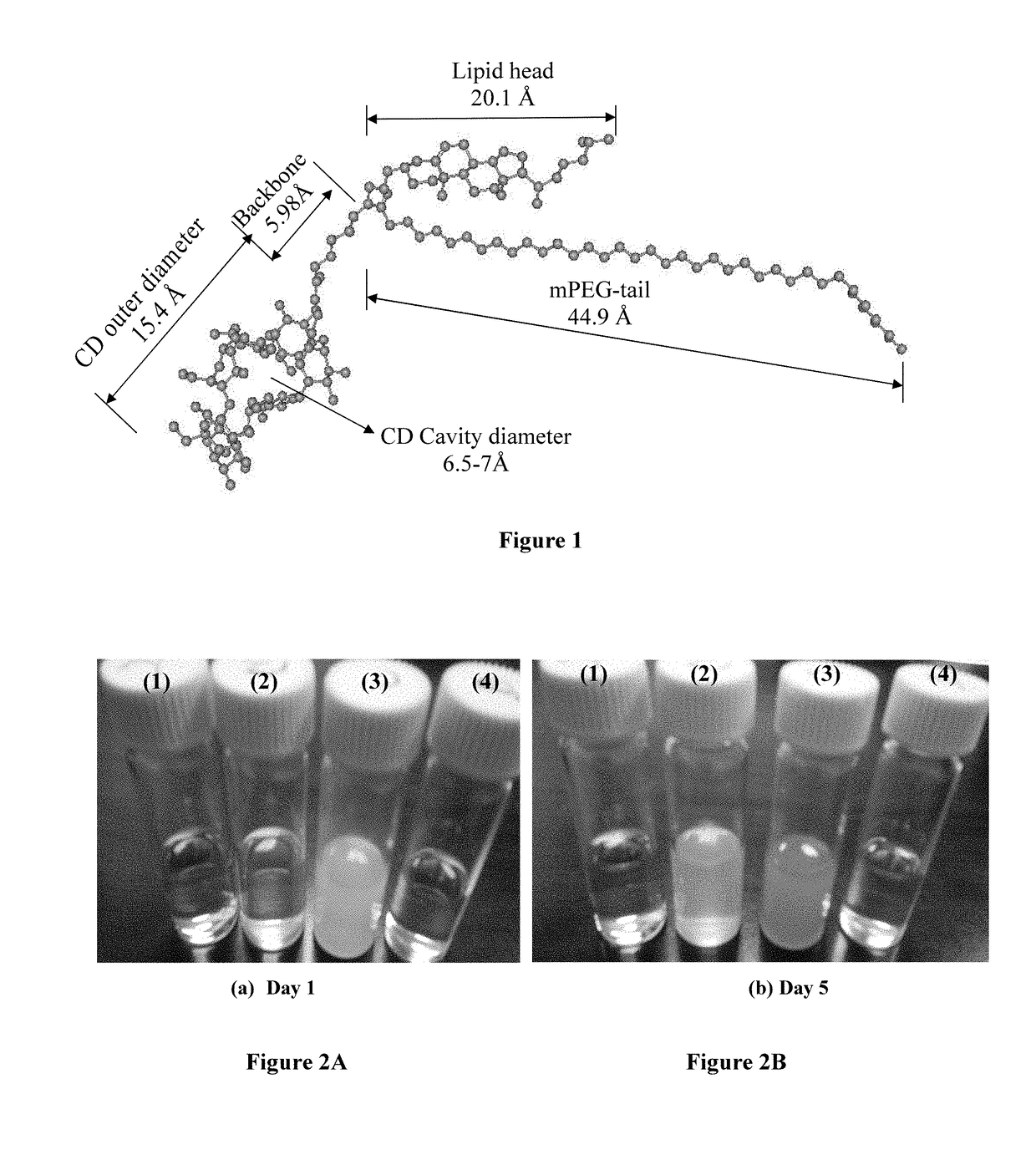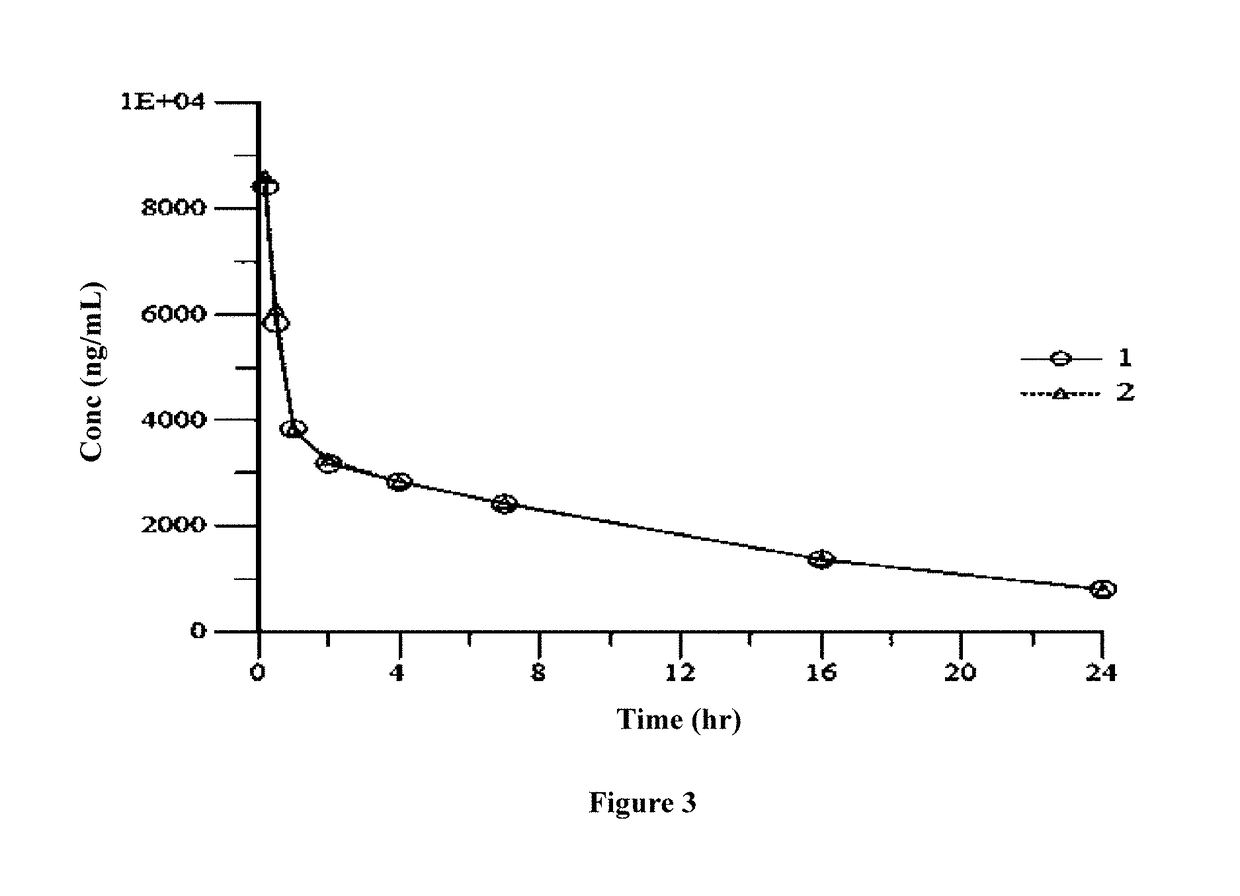Polymer-cyclodextrin-lipid conjugates
a technology of cyclodextrin and conjugates, applied in the direction of pharmaceutical delivery mechanisms, organic active ingredients, organic chemistry, etc., can solve the problem that polymers are known to be non-biodegradable, and achieve the effect of optimizing performan
- Summary
- Abstract
- Description
- Claims
- Application Information
AI Technical Summary
Benefits of technology
Problems solved by technology
Method used
Image
Examples
example 1
on of tert-Butyl Carbamates (Boc)-Protected Amino Groups
[0114]A high yield and effective synthetic method under a catalyst-free and room temperature was reported previously [Chankeshwara, S V and Chakraborti, A K. Org. Lett., (2006); 8, 3259] and used with slightly modification. To a solution of starting compound containing amino benzoate in MeOH, di-t-butyl Bicarbonate was added as one to one molar ratio. The resulting mixture was stirred overnight at room temperature. When the reaction was done, solvent was removed under vacuum; the residue was dissolved into ethyl acetate and washed with saturated NH4Cl aqueous solution once, then dried over Na2SO4 and condensed to yield the expected product (>90%). Example of this reaction is demonstrated in Reaction Scheme 4, where R is a main structure of the center backbone. This method gives N-t-Boc derivatives chemoselectively without any side products (such as isocyanate, urea, N,N-di-t-Boc).
[0115]
example 2
ion of Boc-Protected Amino Groups
[0116]Effective reagents for the deprotection of tert-butyl carbamates or tert-butyl esters include phosphoric acid and trifluoroacetic acid. The reactions give high yields and very convenient [Li, B. Berliner, M. etc, J. Org. Chem., 2006; 71, 9045]. Equal volumes of trifluoroacetic acid were added to a solution of Boc-carbamate (10% of crude product) in CH2Cl2. The resulting solution was stirred at room temperature for overnight and the solvent was evaporated and the residue was re-dissolved into CH2Cl2, then washed with saturated NaHCO3 and dried over MgSO4. Solvent was evaporated and was used in next step without further purification.
example 3
on of N-Boc-cholesterylserinate
[0117]0.03 moles of N-Boc-serine was constantly stirred under nitrogen in 100 mL of chloroform. 0.03 mole of cholesteryl choloformate was dissolved with 100 mL of chloroform and added to this heterogeneous mixture of N-tert-butyloxycarbonylserine and followed by adding 10 mL of anhydrous pyridine. The reaction for 30 minutes under constantly stirring at room temperature, the mixture turned to homogeneous and the reaction was completed when no detectable cholesteryl chloroformate was in the mixture. The bulk solvent was removed under vacuum and the crude product was used to next step without further purification. The resulting product (% of yields 70-80) is showed in Chemical Structure 5.
[0118]
PUM
| Property | Measurement | Unit |
|---|---|---|
| temperature | aaaaa | aaaaa |
| temperature | aaaaa | aaaaa |
| temperature | aaaaa | aaaaa |
Abstract
Description
Claims
Application Information
 Login to View More
Login to View More - R&D Engineer
- R&D Manager
- IP Professional
- Industry Leading Data Capabilities
- Powerful AI technology
- Patent DNA Extraction
Browse by: Latest US Patents, China's latest patents, Technical Efficacy Thesaurus, Application Domain, Technology Topic, Popular Technical Reports.
© 2024 PatSnap. All rights reserved.Legal|Privacy policy|Modern Slavery Act Transparency Statement|Sitemap|About US| Contact US: help@patsnap.com










